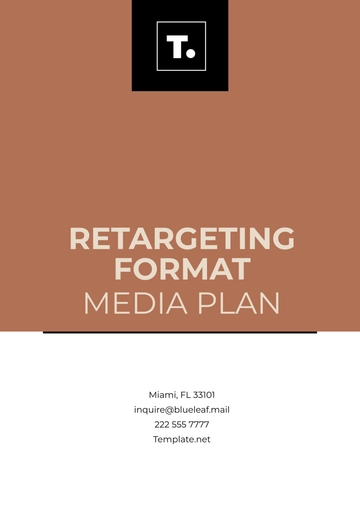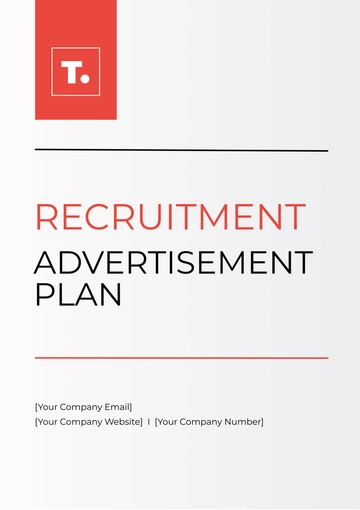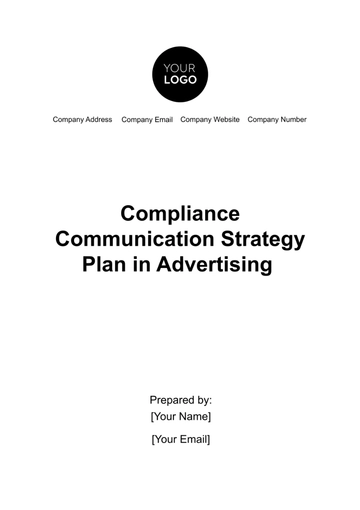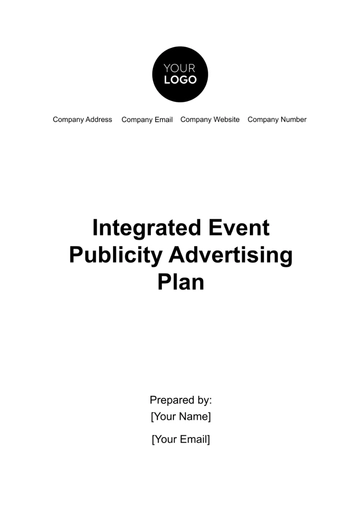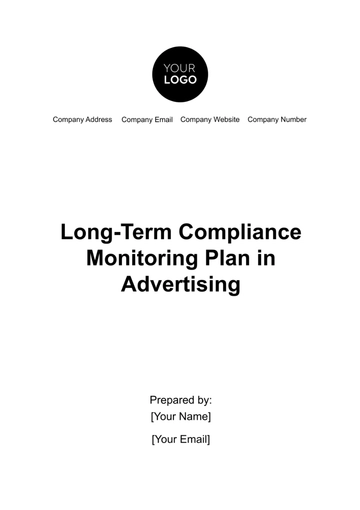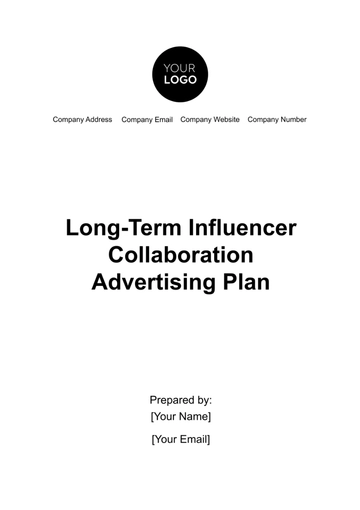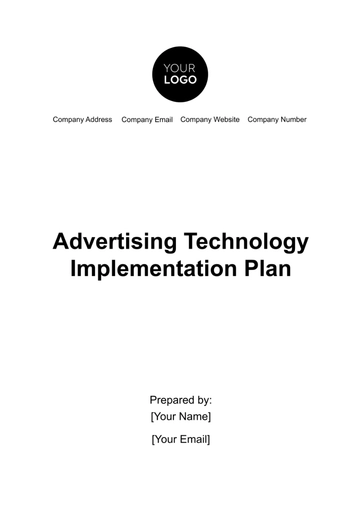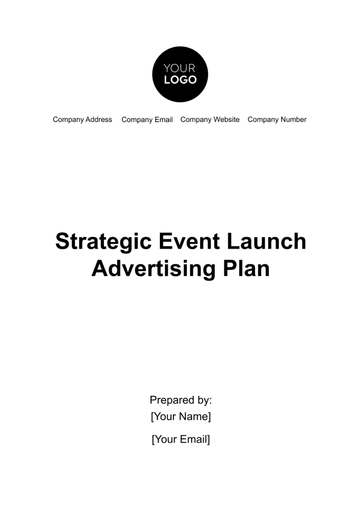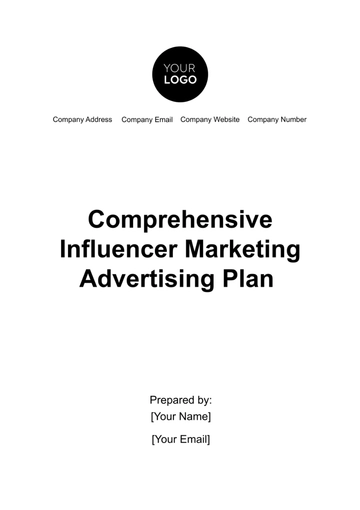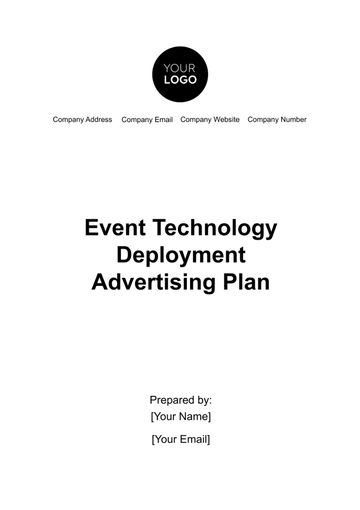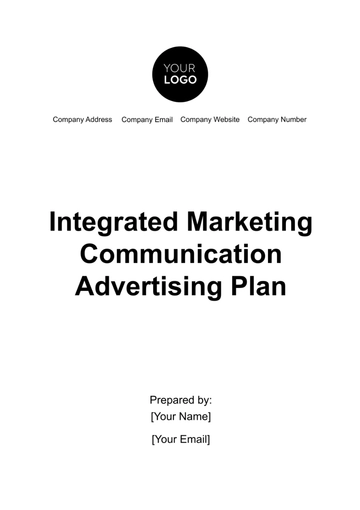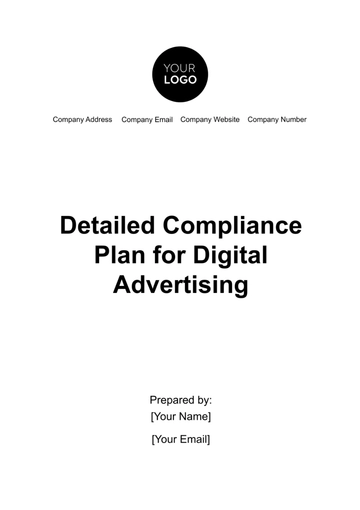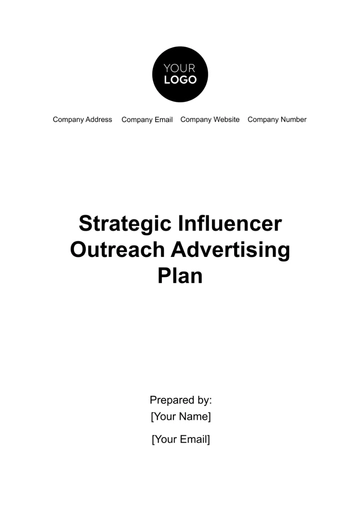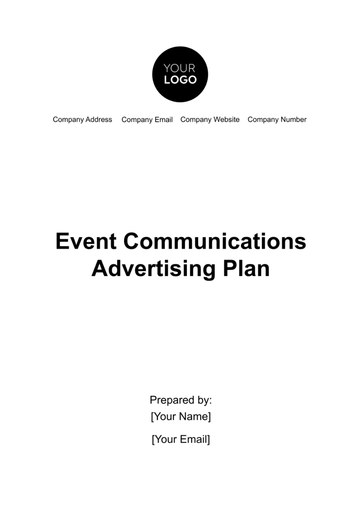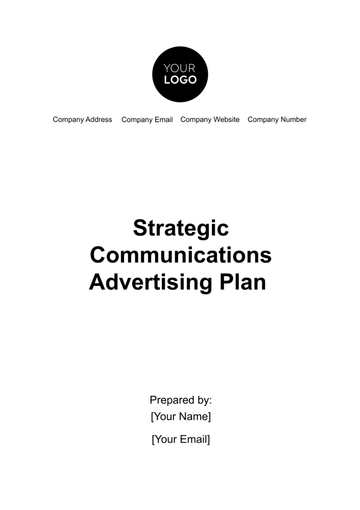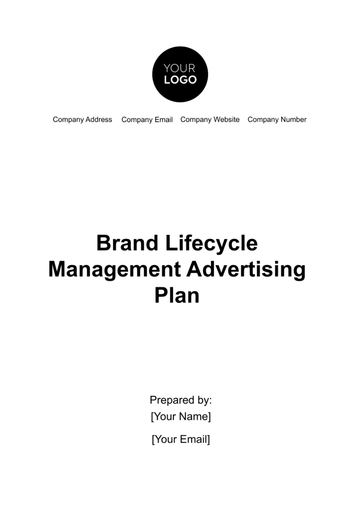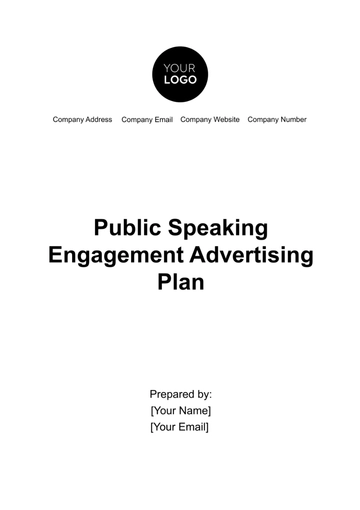Free Advertising Emergency Response Plan for Campaign Issues
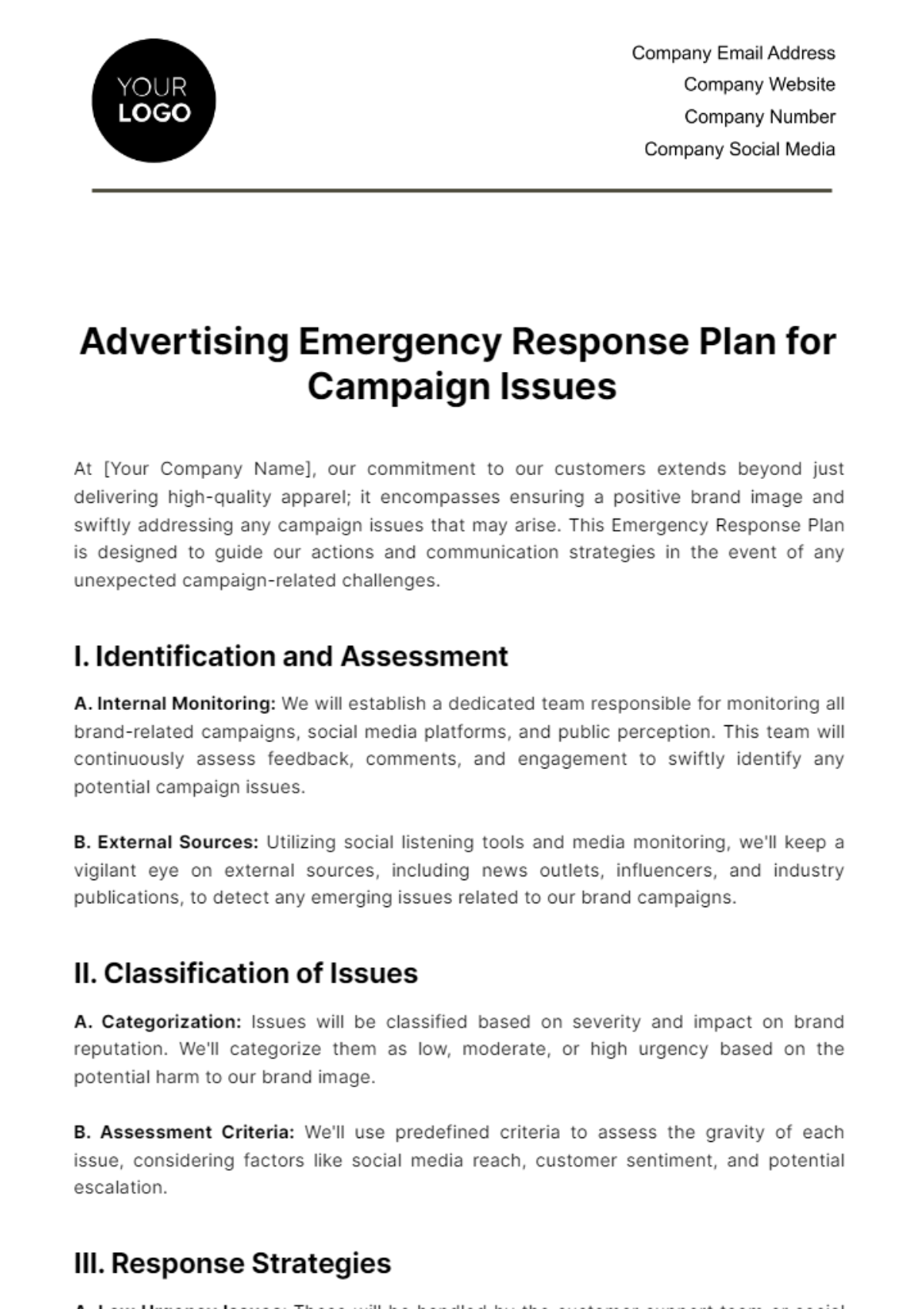
At [Your Company Name], our commitment to our customers extends beyond just delivering high-quality apparel; it encompasses ensuring a positive brand image and swiftly addressing any campaign issues that may arise. This Emergency Response Plan is designed to guide our actions and communication strategies in the event of any unexpected campaign-related challenges.
I. Identification and Assessment
A. Internal Monitoring: We will establish a dedicated team responsible for monitoring all brand-related campaigns, social media platforms, and public perception. This team will continuously assess feedback, comments, and engagement to swiftly identify any potential campaign issues.
B. External Sources: Utilizing social listening tools and media monitoring, we'll keep a vigilant eye on external sources, including news outlets, influencers, and industry publications, to detect any emerging issues related to our brand campaigns.
II. Classification of Issues
A. Categorization: Issues will be classified based on severity and impact on brand reputation. We'll categorize them as low, moderate, or high urgency based on the potential harm to our brand image.
B. Assessment Criteria: We'll use predefined criteria to assess the gravity of each issue, considering factors like social media reach, customer sentiment, and potential escalation.
III. Response Strategies
A. Low Urgency Issues: These will be handled by the customer support team or social media managers. They'll employ pre-approved responses and solutions to address concerns promptly while keeping an eye on the situation's development.
B. Moderate Urgency Issues: A crisis management team will be activated to draft an immediate response plan. This team includes representatives from PR, marketing, legal, and senior management. They'll collaborate to craft a comprehensive strategy to address the issue while minimizing reputational damage.
C. High Urgency Issues: In cases of crisis, a crisis war room will be established. This room will have round-the-clock monitoring and direct lines of communication with the highest levels of management. The team will work swiftly to contain the issue, issue public statements, and engage with stakeholders to mitigate negative fallout.
IV. Communication Plan
A. Transparency: We'll communicate openly with our customers, stakeholders, and the public, providing regular updates on the situation and the steps we're taking to resolve it.
B. Unified Messaging: All communication channels will adhere to a unified message crafted by the crisis management team. Consistency in messaging is crucial to avoid confusion and convey a sense of control during turbulent times.
C. Social Media Protocol: All scheduled posts and campaigns will be halted immediately. Our social media platforms will prioritize addressing the issue and disseminating relevant information.
V. Evaluation and Learning
A. Post-Crisis Analysis: Following resolution, a detailed post-crisis analysis will be conducted. This assessment will identify strengths, weaknesses, and areas for improvement in our response strategies.
B. Continuous Improvement: Insights gathered from post-crisis analysis will inform updates to our Emergency Response Plan. We'll continuously refine our strategies to better anticipate, manage, and mitigate potential campaign issues.
This Emergency Response Plan serves as our proactive approach to swiftly and effectively address any campaign issues, safeguarding our brand's integrity and maintaining our commitment to excellence.
- 100% Customizable, free editor
- Access 1 Million+ Templates, photo’s & graphics
- Download or share as a template
- Click and replace photos, graphics, text, backgrounds
- Resize, crop, AI write & more
- Access advanced editor
Ensure campaign resilience with our Advertising Emergency Response Plan for Campaign Issues Template from Template.net. Editable and customizable in our Ai Editor Tool, this plan equips your team to swiftly address unforeseen challenges. Prepare for any eventuality and maintain campaign integrity with this comprehensive template, designed to keep your advertising efforts on track.
You may also like
- Finance Plan
- Construction Plan
- Sales Plan
- Development Plan
- Career Plan
- Budget Plan
- HR Plan
- Education Plan
- Transition Plan
- Work Plan
- Training Plan
- Communication Plan
- Operation Plan
- Health And Safety Plan
- Strategy Plan
- Professional Development Plan
- Advertising Plan
- Risk Management Plan
- Restaurant Plan
- School Plan
- Nursing Home Patient Care Plan
- Nursing Care Plan
- Plan Event
- Startup Plan
- Social Media Plan
- Staffing Plan
- Annual Plan
- Content Plan
- Payment Plan
- Implementation Plan
- Hotel Plan
- Workout Plan
- Accounting Plan
- Campaign Plan
- Essay Plan
- 30 60 90 Day Plan
- Research Plan
- Recruitment Plan
- 90 Day Plan
- Quarterly Plan
- Emergency Plan
- 5 Year Plan
- Gym Plan
- Personal Plan
- IT and Software Plan
- Treatment Plan
- Real Estate Plan
- Law Firm Plan
- Healthcare Plan
- Improvement Plan
- Media Plan
- 5 Year Business Plan
- Learning Plan
- Marketing Campaign Plan
- Travel Agency Plan
- Cleaning Services Plan
- Interior Design Plan
- Performance Plan
- PR Plan
- Birth Plan
- Life Plan
- SEO Plan
- Disaster Recovery Plan
- Continuity Plan
- Launch Plan
- Legal Plan
- Behavior Plan
- Performance Improvement Plan
- Salon Plan
- Security Plan
- Security Management Plan
- Employee Development Plan
- Quality Plan
- Service Improvement Plan
- Growth Plan
- Incident Response Plan
- Basketball Plan
- Emergency Action Plan
- Product Launch Plan
- Spa Plan
- Employee Training Plan
- Data Analysis Plan
- Employee Action Plan
- Territory Plan
- Audit Plan
- Classroom Plan
- Activity Plan
- Parenting Plan
- Care Plan
- Project Execution Plan
- Exercise Plan
- Internship Plan
- Software Development Plan
- Continuous Improvement Plan
- Leave Plan
- 90 Day Sales Plan
- Advertising Agency Plan
- Employee Transition Plan
- Smart Action Plan
- Workplace Safety Plan
- Behavior Change Plan
- Contingency Plan
- Continuity of Operations Plan
- Health Plan
- Quality Control Plan
- Self Plan
- Sports Development Plan
- Change Management Plan
- Ecommerce Plan
- Personal Financial Plan
- Process Improvement Plan
- 30-60-90 Day Sales Plan
- Crisis Management Plan
- Engagement Plan
- Execution Plan
- Pandemic Plan
- Quality Assurance Plan
- Service Continuity Plan
- Agile Project Plan
- Fundraising Plan
- Job Transition Plan
- Asset Maintenance Plan
- Maintenance Plan
- Software Test Plan
- Staff Training and Development Plan
- 3 Year Plan
- Brand Activation Plan
- Release Plan
- Resource Plan
- Risk Mitigation Plan
- Teacher Plan
- 30 60 90 Day Plan for New Manager
- Food Safety Plan
- Food Truck Plan
- Hiring Plan
- Quality Management Plan
- Wellness Plan
- Behavior Intervention Plan
- Bonus Plan
- Investment Plan
- Maternity Leave Plan
- Pandemic Response Plan
- Succession Planning
- Coaching Plan
- Configuration Management Plan
- Remote Work Plan
- Self Care Plan
- Teaching Plan
- 100-Day Plan
- HACCP Plan
- Student Plan
- Sustainability Plan
- 30 60 90 Day Plan for Interview
- Access Plan
- Site Specific Safety Plan

